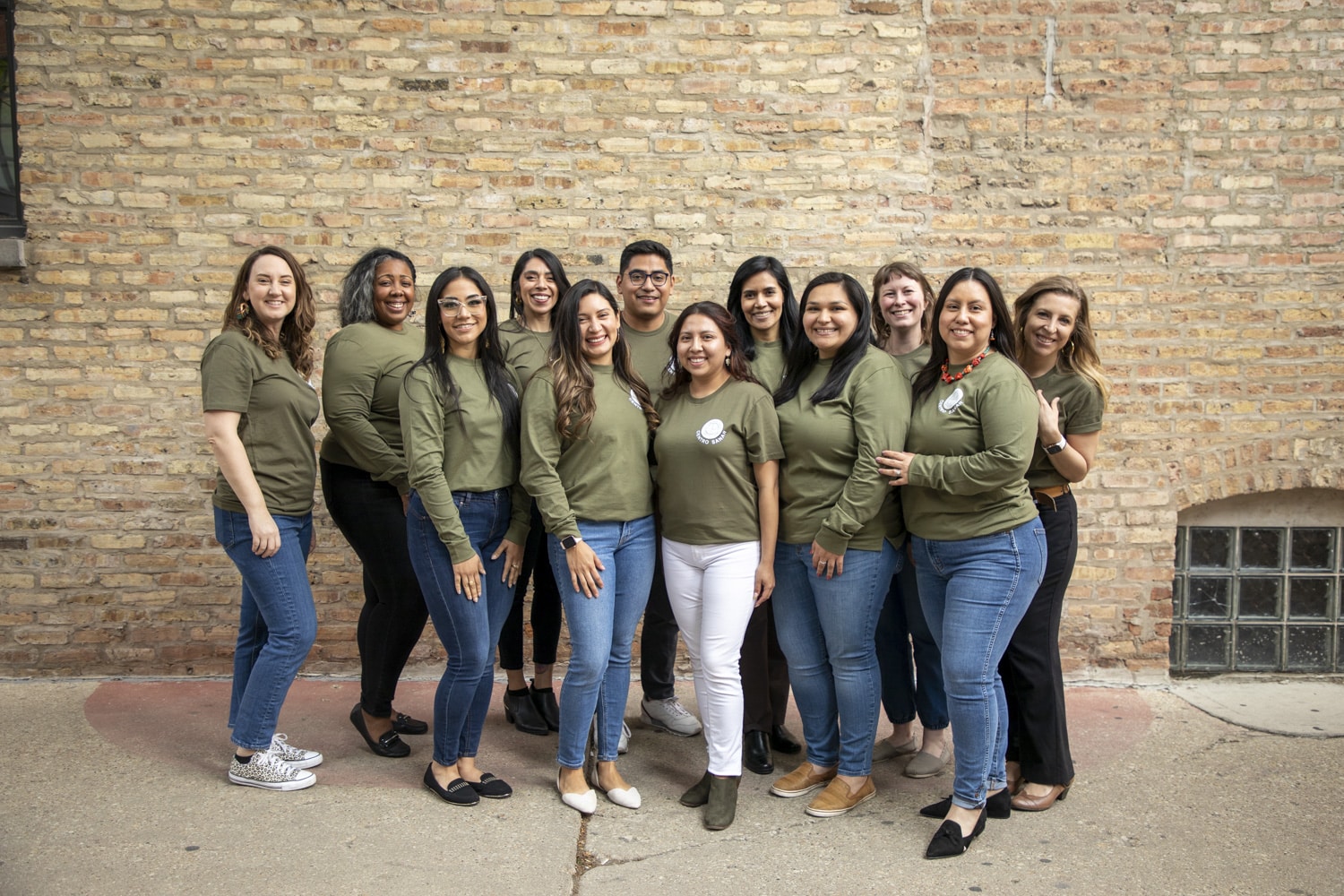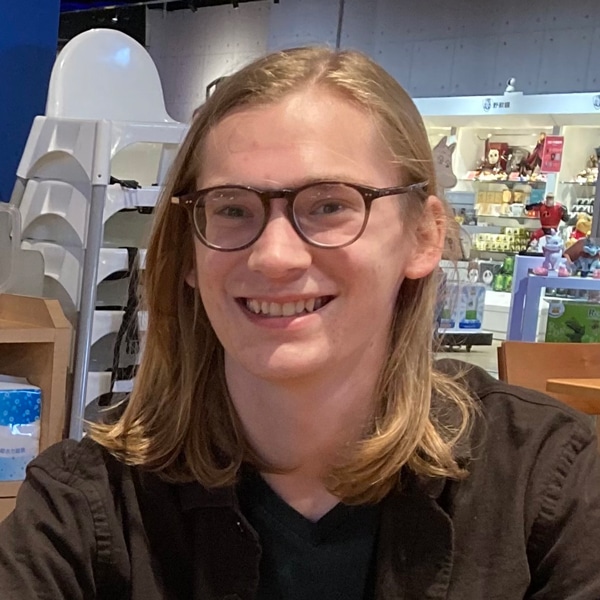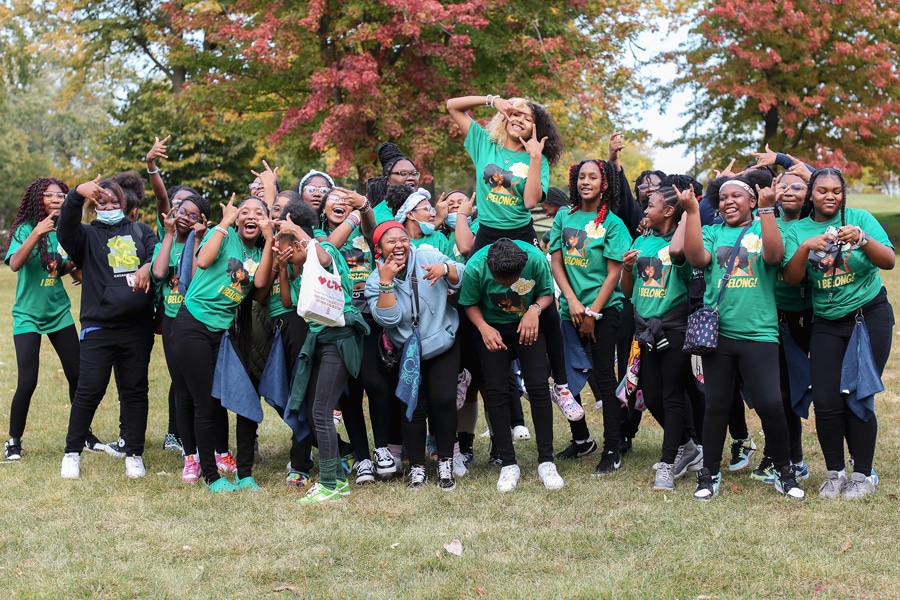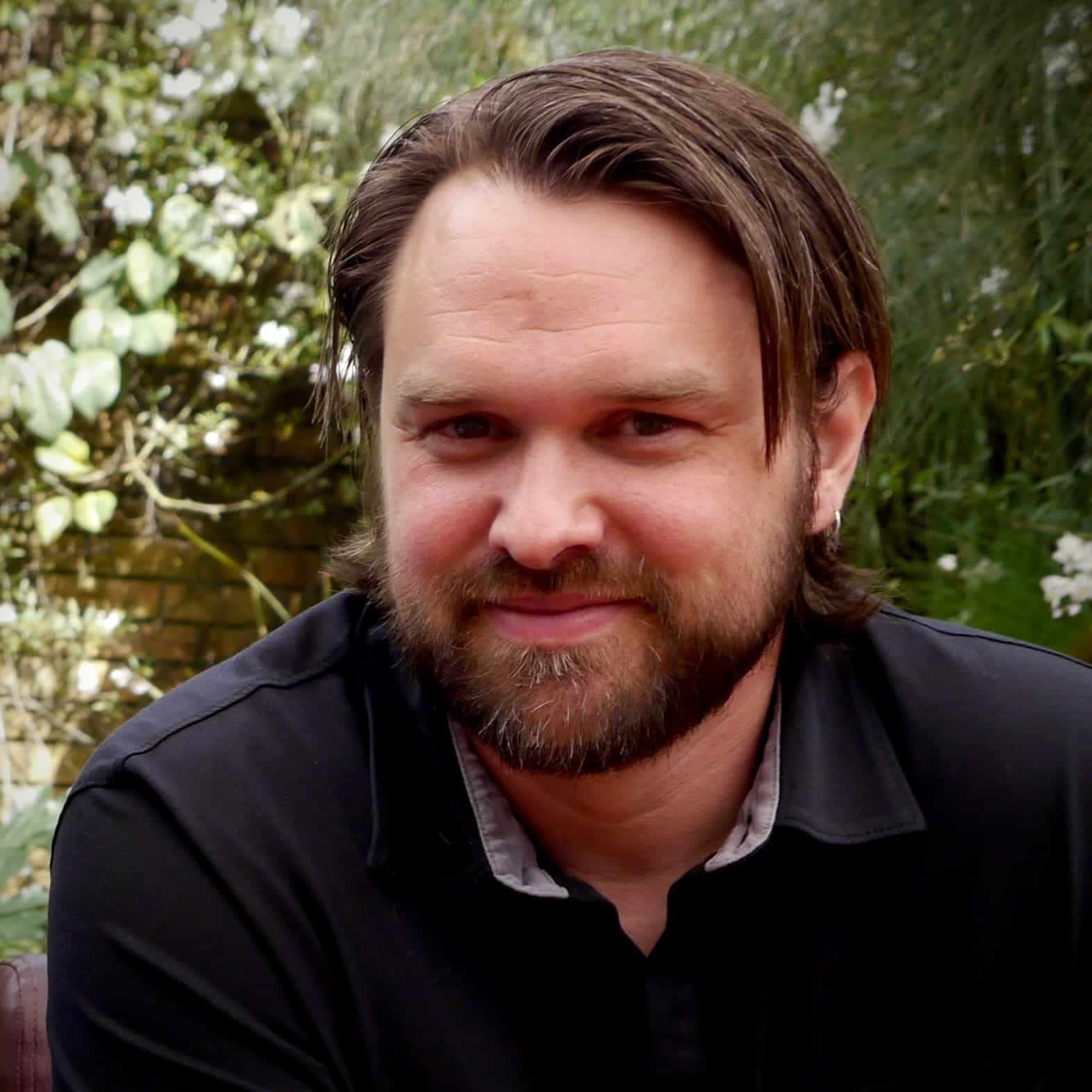An Alternative Mental Health Care Model Emerges on the Southwest Side
In August of 2023, Chicago Beyond, a philanthropic organization that invests in organizations working to ensure that young people and community members are free to live full lives, announced a $1.6 million investment in Centro Sanar.
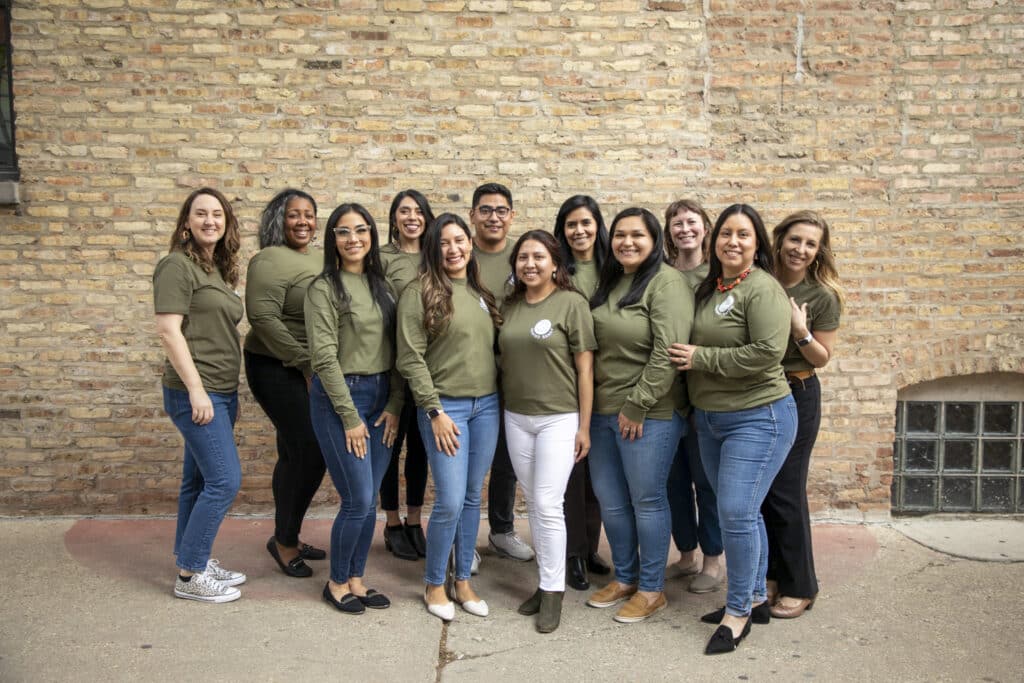
Centro Sanar, co-founded by 2022 Chicago Peace Fellow, Edwin Martinez, provides free mental health services to the southwest communities of Gage Park, Brighton Park, South Lawndale "Little Village," and Back of the Yards. This funding will help support Centro Sanar’s mission of addressing nationwide mental health service gaps in Latinx communities through a replicable model that acts as an alternative to the current mental health industry.
Chicago Beyond initially identified Edwin and the work Centro Sanar was doing through exploring the value of lived experience in community engagement and mental health services. A Growth Manager at Chicago Beyond found Edwin through an article in The Trace, a media outlet that reports on gun violence. As conversations between Chicago Beyond and Centro Sanar developed, it became clear that Centro Sanar had cultivated deep connections with both community members and organizations that serve the Southwest side. This ultimately resulted in a lasting partnership between the two organizations:
As an organization, Chicago Beyond deeply values Centro Sanar’s founders’ lived experiences and believes that in consultation with their partners and with those that they serve. Centro Sanar is serving the community’s needs, addressing systemic harms, and delivering a lasting impact.
-Lisa Caldeira, Growth Manager at Chicago Beyond
Centro Sanar is made up of social workers and therapists who have around 50 years of collective experience. When asked about the quick expansion of Centro Sanar, Edwin responded: “A lot of our success has been due to the community uplifting our work. We started off as volunteers in March of 2020 under the incubation of the Port Ministries. That provided us with a space to start the work and provide clinical services, which started to blow up in November of that same year when we started to receive funding. Fast forward to May of 2022, we were able to quickly launch a 501(c)(3) due to our relationships with stakeholders who were able to bring on state funding.”
By facilitating the development of lasting relationships between clinicians and community members, Centro Sanar has been able to expand its services rapidly and offer new forms of mental health services to an underserved population.
A Non-Medicalized Approach to Mental Health Care
Centro Sanar takes a non-medicalized approach to mental health care, which the team credits with the success of its programs. Edwin has seen mental health programs that take a medicalized approach fail due to the way their systems were funded and their way of reporting services to the government: “Our clinicians don’t have a fifty patient caseload, they don’t have a specific productivity guideline like in a medicalized system. They don’t have to do thirty five hours of clinical work for billing purposes. They are able to do community-based presentations and different levels of engagement so that they meet with community members when they are not in a state of crisis. This also means word of mouth referrals increase.”
The majority of Centro Sanar’s patients enter their care through word of mouth referrals, which means that neighbors and family members are sharing and promoting mental health care resources and are trusting Centro Sanar’s model of care. Word of mouth referrals also reduce the stigma of seeking out mental health care as friends and family members in the community encourage individuals to seek out preventative care prior to a mental health emergency.
By functioning outside of a medicalized mental health care model, Centro Sanar is also able to extend its mental health services outside of times of crisis. Whereas many medicalized mental health services are designed to tackle mental health emergencies, Centro Sanar expands services to preventative forms of mental health care. When asked what separates Centro Sanar from traditional mental health services, Edwin replied,
Consistency and presence. We’re one of the few organizations that provide free long-term care, consistent care that is not just twelve to twenty four 30-minute sessions over the course of six weeks. We’re doing what community members want, which is consistent and quality care. Even as a small organization we are making sure that we are providing long term service at different clinical modalities that tend to be inaccessible to our population and providing them in the language that they speak. That’s something that is often inaccessible in the current mental health landscape that we are in.
-Edwin Martinez, Executive Director at Centro Sanar
Collaborating to Expand Access to Services
One way that Centro Sanar is tackling the problem of helping underserved populations is by working with other organizations that complement their mental health services. For instance, their partnership with Port Ministries not only provides Centro Sanar with a space to operate from, but also allows for a co-location of services. Port Ministries, run by peer Chicago Peace Fellow Alumni David Gonzalez, offers services that complement Centro Sanar’s such as a free health clinic and an afterschool programs that can assist with child care.
Centro Sanar has also been able to co-locate with PODER, an immigrant integration center that works primarily with Spanish-speaking adults. PODER provides a space for Centro Sanar to operate from and also allows for a co-location of services. PODER offers programs that complement Centro Sanar such as workforce development and immigrant integration services. Offering behavioral health and workforce development with the same space increases the capacities of both organizations by streamlining referrals, access to care, and improving different areas of wellness.
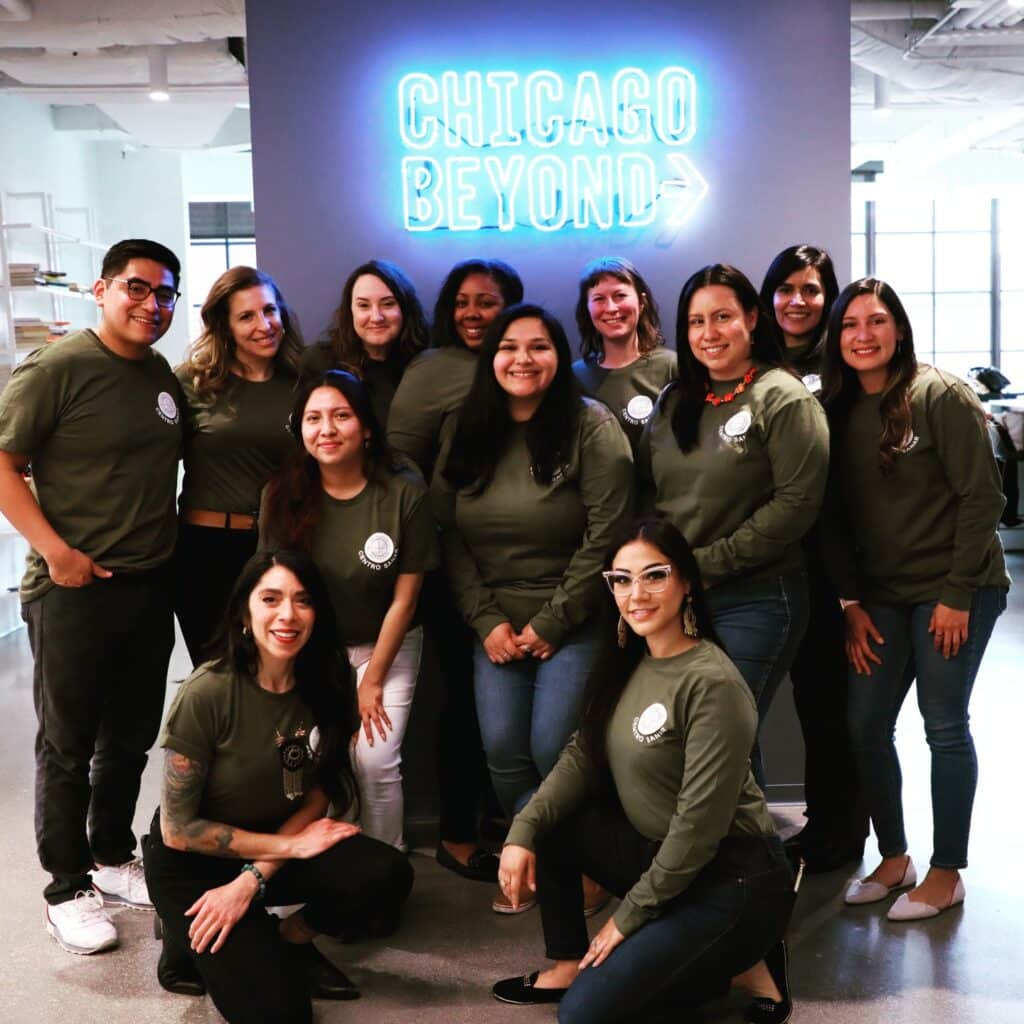
There is no shortage of work for Centro Sanar, they currently have a 10 month waitlist for individual therapy with close to 300 people waiting to receive services. This need is largely amplified by a systemic disinvestment of mental health services for BIPOC communities. As a young organization, the investment from Chicago Beyond will allow Centro Sanar to sustain their work and establish themselves as an organization. The funding provides financial flexibility for Centro Sanar to focus on what they know to be most critical for their organization and their clients. Financial security also allows Centro Sanar independence in establishing itself as an organization and figuring out what is needed in their infrastructure.
Both Chicago Beyond and Centro Sanar are especially excited at the prospect of serving as a blueprint for alternative mental health services in the future. Edwin in particular is hopeful that some aspects of Centro Sanar’s model of care can be extended into the public space, emphasizing that he would like Centro Sanar to, “give an example of an organization that is being creative, that is being innovative, and that is researching its work. This has always been a passion of mine, how can a public mental health clinic adapt this model to be implemented in its work.”
Central to both Centro Sanar’s growth and to its future is its ability to weave in partners to its mission and strengthen the community fabric. Lisa of Chicago Beyond emphasizes: “The team at Centro Sanar have carefully crafted combinations of ways to engage community members toward healing, not just towards dealing with instances of loss and grief, but towards a deep intergenerational wellness. For communities that have experienced generational harms and systemic oppression, receiving care that is long-term, free of charge, and accessible — culturally, linguistically and physically — leads to individual and familial healing, which in turn leads to community healing.”
Celebrating the Chicago Day of the Girl
by Zeki Salah, Mutual Aid Collaborative Facilitator

On October 11, the Girls Like Me Project, Inc. hosted the 11th annual Chicago Day of the Girl at the South Shore Cultural Center. The event coincides with the International Day of the Girl, which is an international observance day established by the United Nation on October 11, 2012 to increase awareness of gender inequality faced by girls worldwide and to support more opportunities for them. The Chicago Day of the Girl focuses on recognizing and providing opportunities for Black girls ages 13 to 18 years old in the City of Chicago.

This year, the theme of the Chicago Day of the Girl was “I Belong” and the programming was aimed towards reclaiming spaces for Black girls that often feel inaccessible. La’Keisha Gray-Sewell, a 2020 Chicago Peace Fellow and the Executive Director of the Girls Like Me Project spoke to the importance of reinforcing the girls’ right to spaces throughout the city: “Many girls feel like they only belong in certain spaces and that they are confined to their neighborhoods. So we wanted to build a sense of belonging: they belong to this city and that this city belongs to them.” The Chicago Day of the Girl worked to address the way the city is segregated by race, class, and income by showcasing how different organizations and resources can be utilized to celebrate and center the voices of Black girls. The South Shore Cultural Center also made for a significant venue because it gave the girls an opportunity to be in an establishment that is seen as exclusive.

Chicago Public Schools across the city participated in the Chicago Day of the Girl, with 253 girls attending in total. The University of Chicago Charter School Woodlawn, Gary Comer Charter School, and Nicholson STEM Academy were some of the schools that were connected to the Chicago Day of the Girl through partnerships with the Girls Like Me Project, Inc. The event was held from 10am - 3pm, allowing the girls to leave the classroom and receive educational enrichment outside of their schools.

As an educational enrichment opportunity outside of the classroom, the Chicago Day of the Girl was able to address issues that receive limited attention in schools, allowing programming to be gender responsive and internationally oriented. The day’s activities aimed to make the girls in attendance feel like they belong and are included in a global empowerment conversation. The Chicago Day of the Girl originally grew out of the Girls Like Me Project’s Global Connections program, which aimed to show girls in Chicago what girlhood looks like in other spaces around the world. This has influenced programming to have an international reach, that aims to not only bring the voices and perspectives of Black girls into international conversations, but also to provide resources that help them travel internationally.

Girls who attended the Chicago Day of the Girl were provided with connections to the global community and opportunities for international travel by local international organizations. WorldChicago, an internationally-oriented nonprofit focused on citizen diplomacy, presented their Youth Diplomat program to the girls in attendance. This program admits students to engage in cross-cultural conversations with international peers and attend lectures and workshops with global and Chicago area academics, government officials, and community leaders. Tiffany Smith, a travel writer from Bronzeville, also shared her experience traveling outside of the country and the barriers to travel she faced as a Black girl. The Global Strategists Association addressed some of the challenges girls might face by sharing information about passports. The Girls Like Me Project will also sponsor passports for three girls who attended the Day of the Girl, as well as African ancestry tests. Collectively the organizations involved provided tools for Black girls to engage with girlhood internationally while also showing that their voices are needed in an international space.

Organizations across the city of Chicago also collaborated to show their commitment towards supporting, celebrating, and amplifying the voices of Black girls. Damon Reed, a local Chicago artist, came and showcased murals that girls involved in the Girls Like Me Project painted with his support. The murals depict missing Black girls whose stories have not received significant media coverage. Dr. Ruby Mendenhall of UIC Champaign-Urbana also created an exhibit which was featured at the Day of the Girl by working with the mothers and daughters of the Girls Like Me Project. Their exhibit featured portraits of what brings them joy and healing. These projects showed the girls in attendance the importance of their experiences and how their stories can be told in a powerful and influential way.

The Chicago Day of the Girl provided Black girls from Chicago with a sense of belonging within both local and global communities and emphasized their capacity to enact change. The girls who attended were given tools for advocacy by the participating organization and a platform for self-expression. Local talent was also showcased, with dance performances from the Girls Like Me Project, music, a teen talk show, and a performance from Dee Dee Davis of the Bernie Mac Show. Reflecting on the day’s events La’Keisha Gray-Sewell said, “this day was all about Chicago girls and uplifting them and providing them with a platform to celebrate themselves.”
Swingset Activism: The Promise of Social Justice Education Inspired by Childhood
By David C. Metler, 2022 Goldin Global Fellow
“Swingset activism asks us to close our eyes and feel that exhilarating liberation you feel as a child on a swing soaring to new heights, perspective, and possibilities.”
Confucius once said that “we have two lives, and the second one begins when we realize we only have one.” I am convinced that social justice education has two awareness deepening lifecycle journeys. The first begins when you connect your personal experience to a systemic level and the second one begins when you realize social justice begins with childhood.
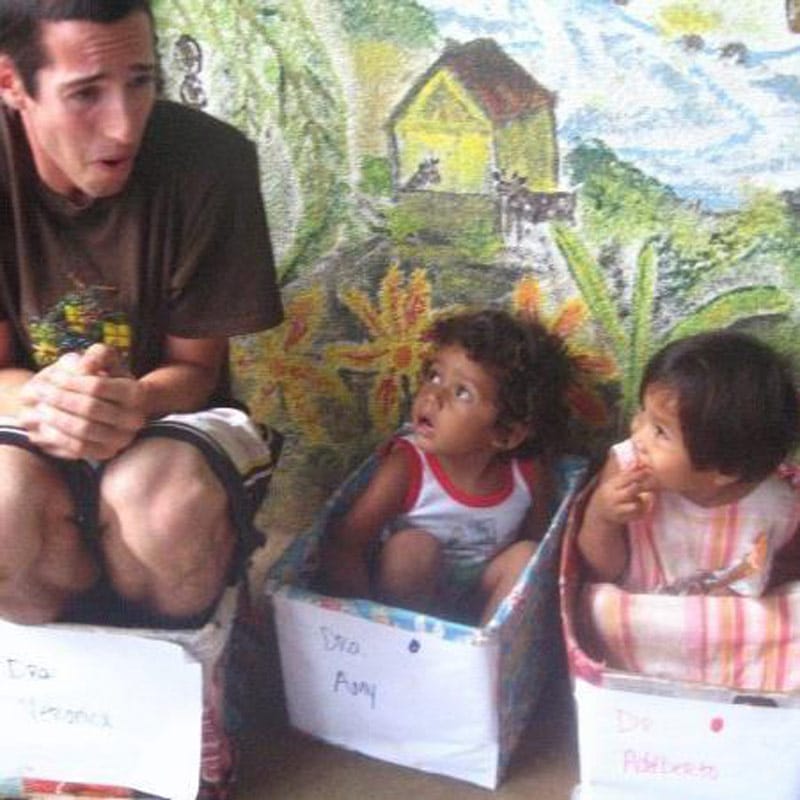
Integrating the Two Journeys
My first formal social justice education experience involved volunteering as a part of the Pangaea World Service Team in Nicaragua when I was a college student at the University of Michigan. It devastated me to learn about the leading role the US has played historically in keeping Nicaragua in poverty. I experienced what Bobbi Harro calls a “critical incident” which “creates enough cognitive dissonance that a change is initiated within the core of a person about what they believe about themselves”. Paulo Freire calls this “conscientizacao” – a transformative process from object to subject that lit my soul on fire for social justice.
Upon returning from this trip, I joined the social justice education University of Michigan’s Program on Intergroup Relations (IGR). Through social justice dialogues, I began to develop critical consciousness around identity, power, privilege, and oppression across personal, interpersonal, institutional, and systemic levels. An IGR mentor told me that there was a book, Parenting for Social Change by Teresa Graham Brett that would “blow my mind.” It completely did.
In bringing together parenting and social change, Teresa integrated her previous social justice education experience around identity and power (being a past co-director of IGR at UM) into her relationships with children. Teresa approached her relationships with children as a personal arena for practicing social justice which was integral to her pursuit of justice in the world. Her book helped me begin to see how a transformation of childhood could transform the world as I realized that there were profound lessons from the wisdom of children and childhood experiences that were invaluable for social justice education and activism.
For more than ten years I have worked with leading child and family activists from across the globe and since 2020, I have created the original concept of Swingset Activism which is currently being studied with a grounded theory approach through creative social justice education with the next generation of changemakers from across the globe. Swingset activism asks us to close our eyes and feel that exhilarating liberation you feel as a child on a swing soaring to new heights, perspective, and possibilities. Swingset Activism is a new type of activism inspired by childhood. There are many types of activism like environmental activism, relational activism, consumer activism, or design activism. Each offers a specific approach and focus lens to changemaking. Swingset Activism is activism generated by love that is integrative, relational, and imaginative. Swingset Activism brings together Ecological Systems Theory (Integrative), Relational Activism (Relational), and the Inner Child (Imaginative). It centers the significance of transforming childhood in activism as a strategy to maximize personal, social, and global transformation.
Swingset Activism brings forth a new level of awareness which catalyzed my search for my own authentic voice at the root of my passion for social justice. As I meditated on finding my inner child’s authentic voice for social justice, what came up for me is the earliest experience of being in the womb is lived experience of the profound interconnection and interdependence of human nature, and for the first few years of infancy there is no “other”. This is important to remember in pursuits of solidarity and partnership in social justice. It is our true nature. It is our original sense of inter-being that acknowledges that all of our liberation is bound together. Through the integration of these insights and practices the elasticity of my own mindset expanded of the whole world being one family and that children are, as Carol Stack would say, “all our kin”.
Understanding the wisdom of my inner child also brought back memories of having a clear, innate sense of right and wrong as a child. This recollection reminds me as an adult that the pursuit of social justice is not performative, but intuitive and relational.
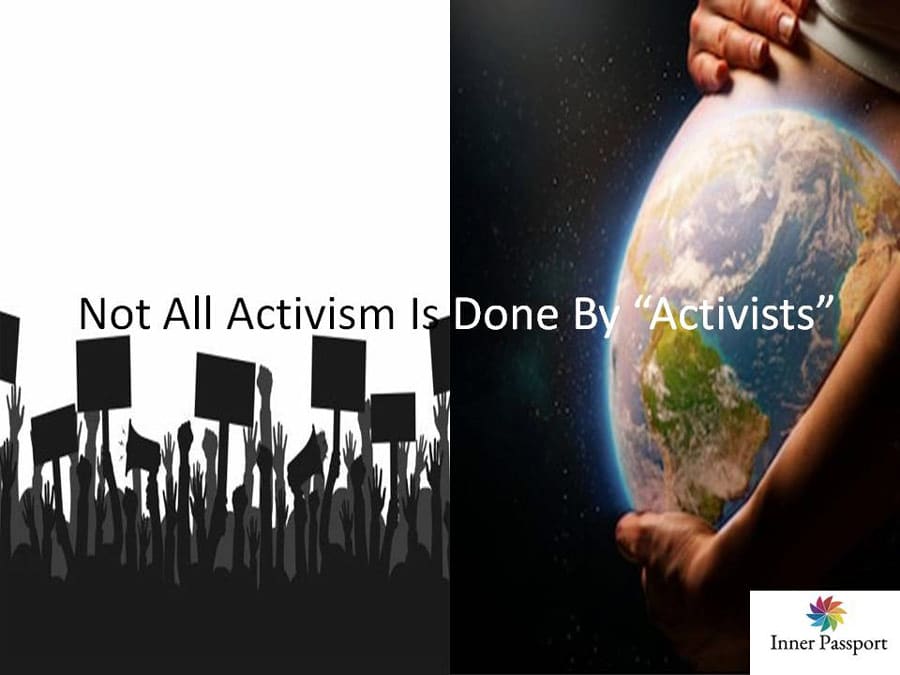
Activism as Relationship
Swingset Activism offers the insight that not all activism is done by “activists.” In their seminal academic article, “Relational Activism: Reimagining Women’s Environmental Work as Cultural Change” Sarah O’Shaugnessy and Emily Kennedy introduce the term “relational activism” for how we approach our personal and private lives that directly affect social change. Relational activism captures the behind-the-scenes, private sphere, community-building work of activism and highlights the importance of community, networks, and communication in contributing to long-term social change. Relational activism values public and private sphere actions equally while honoring the moments of social justice that happen within daily routines and in daily relations with others. For activism to be innovative and to generate a sustainable lifestyle, it needs to live within everyday moments of relationship, especially in building equal power relationships across social identity differences.
I believe that for activism to be integrated into a lifestyle it needs to relational and embrace elements of playfulness, joyfulness, loving-kindness, presence, creativity, and our capacity to re-imagine what’s possible. The process can then match the goal of social justice from integration of these valuable ways of being that children embody most regularly into activism. Audre Lorde says, “the master’s tools will never dismantle the master’s house” which calls upon our imagination and creativity in approaching social justice. I believe it acknowledges the wise contributions of children and childhood experiences in activism. It also serves as a reminder of the solidarity and sacrifice of children and youth literally being on the front lines of social justice movements throughout time, which is not credited since history is typically told by adults.
Intentionally approaching integrity in activism also requires looking critically at what I call the “activist paradox” exploring the ways in activists unconsciously recreate systems of oppression, linked to experiences of oppression in childhood within social justice efforts. Paying attention to these paradoxes will highlight the continual inner work adults need to do to heal their inner child. From reflecting on my childhood, I am able to begin a process of integration that allows me to link the change I wish to see in the world; in myself and my daily routine, ways of being, and relations with others. I have learned to view activism in a relational way that practices social justice in everyday moments, with change happening at the speed of trust, and inner and outer change being interdependent across levels.
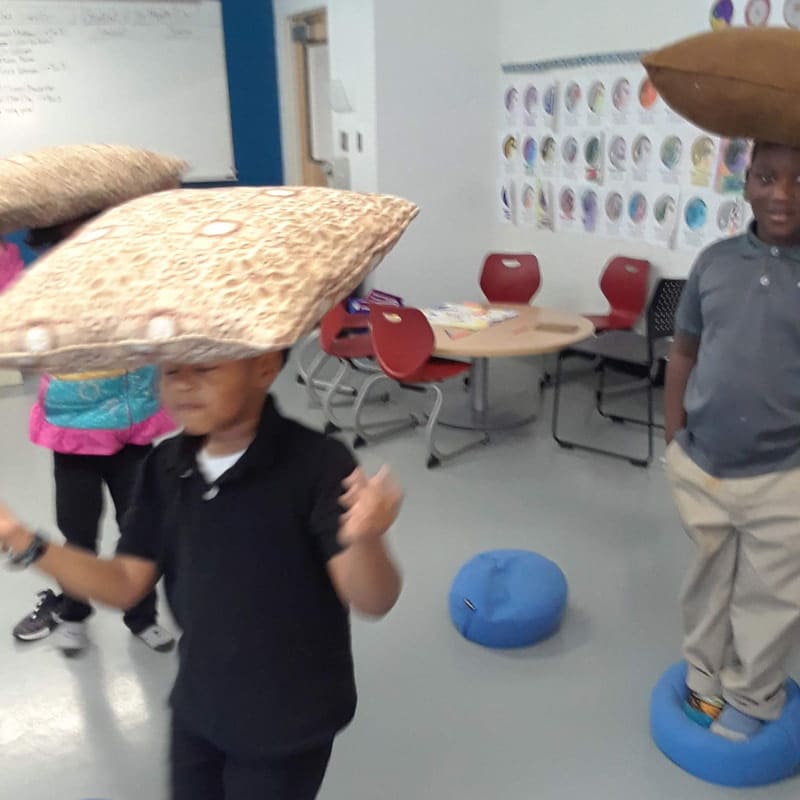
Imagining a Transformed World
As an activist, there is a desire to see clearly the roots of injustice and oppression so that efforts to create change actually transform the systems of oppression and not just the symptoms of oppression. It is known that the nature of oppression is non-hierarchical and intersectional but less known is how oppression is foundational in childhood. The wisdom of the science of relationships has revealed how our earliest relationships set a blueprint for relationships over the lifespan.
Since the oppression of children is the earliest, most normalized, and rationalized form of oppression; it provides the foundation for other forms of oppression because the first relationships in childhood root initial experiences with the common elements of oppression. These common elements of oppression are core to adultism, (the supremacy of adults over children), and underlie oppression in any form:
(1) a false notion of superiority across an identity difference becoming seen as an inherent belief that one identity group is superior to another and
(2) this belief being enforced as justification for the superior group to normalize its power and control over the other to maintain its superiority.
Adultism sets an invisible infrastructure for other socially constructed power-over divides across social identity to find deep hold, especially because children face the oppression of adultism with the least control and capacity to resist or language to make sense of the experience. Oppression then becomes internalized and normalized and the oppressed then become the oppressors, but oppression can be uprooted with the unlearning of adultism and the empowering of children, which is called childism, similar to feminism but for children.
Potentially, the most promising aspect of Swingset Activism, which focuses on social justice beginning with childhood, is that oppression is not only foundational in childhood it is notably the one oppression that all adults have common experience with – although there is difference in how adverse childhood was, everyone experiences adultism in some form during childhood. For example, despite increasing awareness of the commonality of Adverse Childhood Experiences, ACES, the overall experience of childhood involves a lack of control and domination over children by parents, teachers, and a larger institutional and societal culture of adultism. Because all adults were once children and still carry their childhoods within them, the convergence of adulthood and childhood can be comprehended in the mind and the profound interconnection of adult and inner child felt in body.
This shared experience presents an opportunity like no other for interest convergence, a concept that posits that there will only be social justice progress when it is perceived to be in the mutual interests of both the privileged and the oppressed. Unlearning adultism may provide the simplest convergence of mutual interest across a social identity power divide because it so plainly illuminates how deeply our liberation is literally bound up with one another and how adults and children are equal partners in the pursuit of social justice. Adults cannot be truly free until children are free, and until adults heal their inner child from the internalized oppression of their own childhood.
Swingset activism asks us to close our eyes and feel that exhilarating liberation you feel as a child on a swing soaring to new heights, perspective, and possibilities. As Teresa Graham Brett wisely reminded us, we can in full swing begin to “imagine a world where mistrust, power-over dynamics, domination, and oppression no longer exist because children have never experienced them.” We can begin to create a new story of childhood that creates lasting social justice and the transformation of what is possible.
If you would like to be a part of the founding of the Swingset Institute, please contact me at davemetler@gmail.com!
Sincerely,
David Charles Metler
2022 Goldin Global Fellow
Founder, Inner Passport
